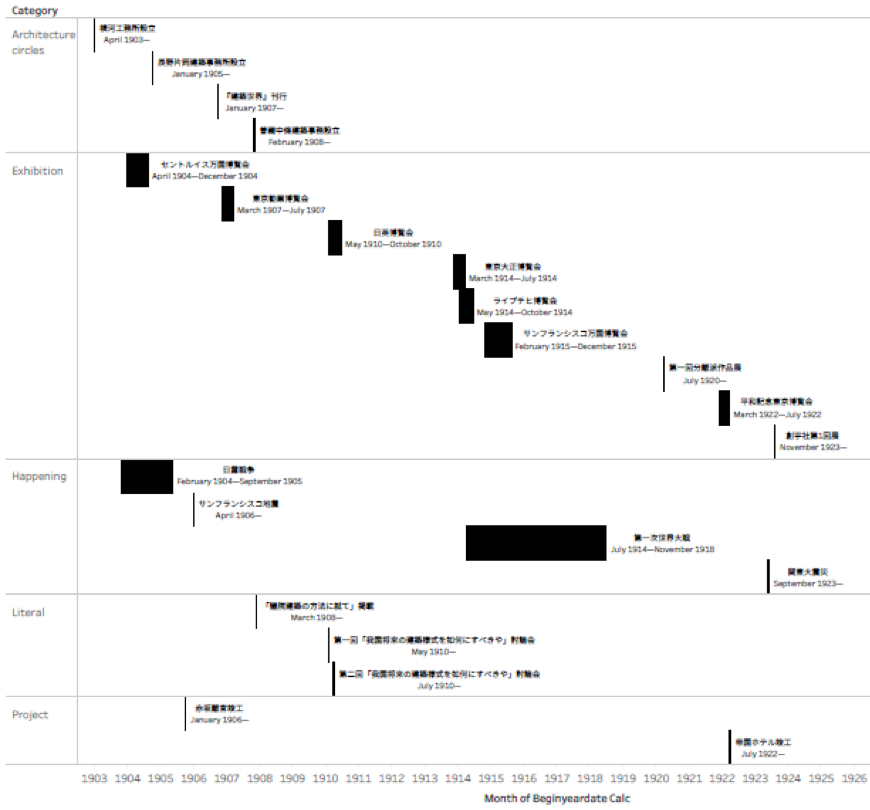Why architectural history of Japan?
As the most developed country of Asia in the field of architecture, the introduction of architectural thoughts and technologies from Occident countries also happened at an early stage of modern age. Although the main battle fields of architecture were the western countries, the development of architecture in Japan definitely has its own trajectory since the reform of Meiji Period. Study about the architectural history of modern Japan helps to reveal the internal development of architecture in this specific sphere as well as provides models for understanding certain social facts.
Materials and method
At current stage, two publications, the journal of Kenchikuzashi(『建築雑誌』: Journal of Architecture) and the magazine of Kenchikusekai(『建築世界』: Architecture World) , which are handled as first-hand materials, are digitalized.
For another, there is no doubt that reading previous works by other scholars with critical attitude is also important in terms of making up the deficiency of knowledge and developing personal opinions throughout the synthesis and contradiction of the whole information.
Considering the physical statue of original literature and synthesis of study, a path that consists of both the traditional method of chronology and analytic study, in which a database is established in a relational and open structure which allows for further study, is developed.

Establishment of database
Currently, the software of Filemaker is implied as the RDBS. As it is showed in the diagram, the structure of database is mainly composed with three parts: the catalog, which serves as the central hub of the whole dataset; the tables for literature, which store the information extracted from the original literatures in the forms of number, text and image; the tables for analysis, independent from the storage of original data, which allow for personal definition of parameters and personalization of analysis. Both the tables for literature and analysis can be added or subtracted respectively which means an extensible structure for current and future studies is ensured.
Additionally, by means of various plots of user interface, the input and maintenance of data can also be more convenient and flexible, although all of these are not published.

Chronological work and analysis of architectural features
In correspondence with the previous work by other scholars, chronologies are made for specify certain events and the timeline in which they locate.

On the other hand, analytic work, which mainly set its foundation on the visualization of data and statistical functions give a perspective upon the analysis with specific purpose.
In the case of the analysis about architectural style, multiple attempts are conducted in forms like observing the general image landed on panels, meticulous work by focusing on several specific identical features such as the orders implemented in buildings.

